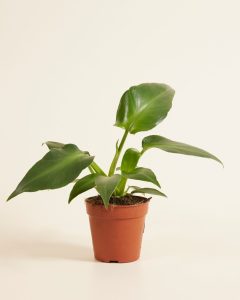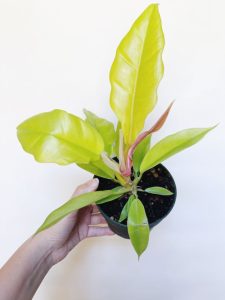- English
- Chinese
- French
- German
- Portuguese
- Spanish
- Russian
- Japanese
- Korean
- Arabic
- Irish
- Greek
- Turkish
- Italian
- Danish
- Romanian
- Indonesian
- Czech
- Afrikaans
- Swedish
- Polish
- Basque
- Catalan
- Esperanto
- Hindi
- Lao
- Albanian
- Amharic
- Armenian
- Azerbaijani
- Belarusian
- Bengali
- Bosnian
- Bulgarian
- Cebuano
- Chichewa
- Corsican
- Croatian
- Dutch
- Estonian
- Filipino
- Finnish
- Frisian
- Galician
- Georgian
- Gujarati
- Haitian
- Hausa
- Hawaiian
- Hebrew
- Hmong
- Hungarian
- Icelandic
- Igbo
- Javanese
- Kannada
- Kazakh
- Khmer
- Kurdish
- Kyrgyz
- Latin
- Latvian
- Lithuanian
- Luxembou..
- Macedonian
- Malagasy
- Malay
- Malayalam
- Maltese
- Maori
- Marathi
- Mongolian
- Burmese
- Nepali
- Norwegian
- Pashto
- Persian
- Punjabi
- Serbian
- Sesotho
- Sinhala
- Slovak
- Slovenian
- Somali
- Samoan
- Scots Gaelic
- Shona
- Sindhi
- Sundanese
- Swahili
- Tajik
- Tamil
- Telugu
- Thai
- Ukrainian
- Urdu
- Uzbek
- Vietnamese
- Welsh
- Xhosa
- Yiddish
- Yoruba
- Zulu
- Kinyarwanda
- Tatar
- Oriya
- Turkmen
- Uyghur

Popular indoor foliage plants with vivid golden leaves and creeping growth properties include Ceylon Golden Philodendron. Although this plant is very adaptable to the surroundings, one of the main elements guaranteeing its healthy development is watering technique. Knowing how to correctly manage the watering frequency of Ceylon Golden Philodendron is a crucial responsibility in the care process as either too much or too little water may have negative effects on the plant.

Heartleaf Philodendron
Ceylon Golden Philodendron’s growth needs
Native to tropical rainforest environments, Ceylon Golden Philodendron has evolved to cope with high humidity and steady warm temperatures. Although the plant is rather thirsty, it also has some degree of drought resistance. Knowing Ceylon Golden Philodendron’s growth needs helps one to create a sensible watering schedule to support its good development.
Ceylon Golden Philodendron roots are commonly found in damp soil in the natural surroundings; so, when grown indoors, we should replicate this habitat. Good drainage in the ideal soil should maintain suitable moisture level. Plants may suffer from either too dry or too moist soil; so, maintaining plant health depends on careful regularity of watering.
Variables influencing the frequency of watering Ceylon Golden Philodendron
A lot of elements influence the frequency of watering: light, temperature, humidity, soil type, and plant development stage. These elements influence Ceylon Golden Philodendron’s water requirements in great detail here:
light
The water requirements of plants directly depend on light. When Ceylon Golden Philodendron’s transpiration is greater and the need for water will rise, the plant grows more aggressively in an environment with enough light. The transpiration is lessened and the water in the soil evaporates more slowly if the plant is in a location with low light, hence the frequency of watering should be lowered.
temperature
The water demands of plants depend in great part on temperature. Though the recommended growing temperature is between 18 and 24 degrees Celsius, Ceylon Golden Philodendron thrives in a warm surroundings. The frequency of watering has to be increased in hot temperatures because the rate of water evaporation of the plant rises. In cold seasons, the need for water drops, the development rate of plants slows down, and the water should be suitably cut off.
Humidity
High humidity settings are where Ceylon Golden Philodendron thrives; humidity is thus very necessary for its development. If the humidity in an indoor setting is low, the evaporation rate of the plant will rise, which might call for more regular watering to maintain appropriate soil moisture. Either a humidifier or a wet tray surrounding the plant will help to preserve air humidity.
Type of soil
The watering need of the plant is largely influenced by the soil’s drainage and water retention capacity. Ceylon Golden Philodendron calls for well-drained soil. Poorly drained or too heavy soil may let water build up and lead to root rot. Using mixed soil with peat, vermiculite or perlite will assist regulate watering frequency and enhance soil drainage.
Stage of plant growth
Water needs will also depend on the plant’s growing stage. Ceylon Golden Philodendron grows quicker and needs more water to sustain its development in the peak growing season—that of spring and summer. During the dormant season—that of fall and winter—the plant’s water needs drop and its growth rate slows down. Watering should be reduced during this period.
Control the frequency of watering the Ceylon Golden Philodendron.
Based on the aforementioned considerations, the watering frequency should be somewhat under control to guarantee the good development of Ceylon Golden Philodendron. These are some doable ideas and techniques:
Recognising soil moisture
One efficient approach to decide when to water is using soil moisture detection. Touching the ground’s surface will help you to sense its moisture. You should think about watering if the surface of the soil is dry and the soil about two to five centimetres is also somewhat dry. Should the soil remain damp, you should wait for further watering. Another handy detecting tool is a soil moisture meter, which will let you more precisely evaluate the moisture content of the ground.
Following the “see dry and see wet” idea
One of the best strategies to regulate watering frequency is the “see dry and see wet” one. That is, water when the ground’s surface is dry; steer clear of watering when the ground is still damp. This helps to lower the overwatering-related root rot risk. Make sure the water you water can reach the root region rather than only dampening the ground’s surface.
Change the watering dosage.
The development requirements of the plant and the surroundings should guide the water quantity modification. The requirement for water is greater and Ceylon Golden Philodendron grows more vigorously in spring and summer. The quantity of irrigation may be suitably raised at this moment. The quantity of watering should be lowered in autumn and winter to prevent root issues resulting from too much water as the growth rate of the plant slows down and the need for water declines.
Determine the appropriate watering time.
Selecting the appropriate watering time may also assist to maintain the plant in good condition. Watering should be done in winter when the temperature is greater throughout the day to enable quicker absorption and evaporation of the water by the soil. Steer clear of watering on chilly evenings to avoid letting the water freeze in a low temperature environment that can lead to root frostbite.
Note environmental changes.
The watering requirements of Ceylon Golden Philodendron could change with changes in the surroundings. For instance, interior temperature and humidity could vary with the seasons. The watering frequency has to be changed at this point to reflect the real circumstances. For instance, it might be required to raise the humidity or change the watering frequency to fit the changing ambient conditions when the inside temperature is adjusted by a heater or air conditioner.
Typical difficulties and remedies
Managing the watering frequency of Ceylon Golden Philodendron could cause several typical issues. These are a few issues along with their fixes:
Root deterioration
Either overwatering or inadequate drainage causes root rot. Reducing the frequency of watering, making sure the soil is adequately drained, and looking for rot in the root system include some of the solutions. Should root rot be discovered, the compromised roots have to be trimmed in time and replaced with fresh soil.
Yellowed leaves
Either inadequate or too much irrigation might cause yellowing of the leaves. Check the soil’s wetness first. Should the soil be too dry, you should boost watering; should the soil be overly moist, you should cut watering and investigate the soil drainage. Yellowing leaves might also be the result of inadequate nutrition; so, appropriate fertilisation is required to encourage the good development of the plant.
Tips for dry leaf
Usually connected to low air humidity are dry leaf tips. Raising the humidity of the air—that is, by running a humidifier or covering the plant with a wet tray—helps to remedy this issue. Simultaneously, steer clear of keeping the plant in a dry surroundings and spritz it often using a sprayer to raise humidity.

Philodendron
Maintaining the healthy development of Ceylon Golden Philodendron depends on careful regularity of watering. Understanding the development requirements of the plant, the elements influencing the frequency of watering, and implementing suitable management actions will help you to properly preserve soil moisture and prevent either too or inadequate watering. Apart from promoting the good development of the plant, reasonable water management enhances the decorative worth of it. To make sure Ceylon Golden Philodendron stays in the optimum shape in the interior environment, you must constantly be aware of its condition and change it depending on environmental factors and plant requirements.
Previous News
Protect Ceylon Golden Philodendron from freezin...Next News
Pruning to promote branching of red-faced philo...


